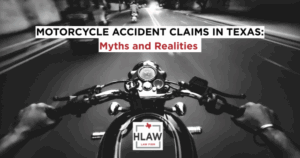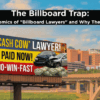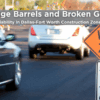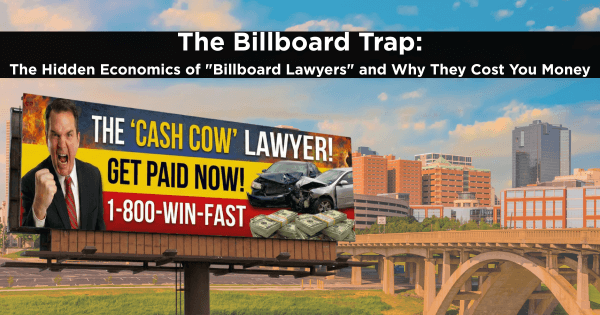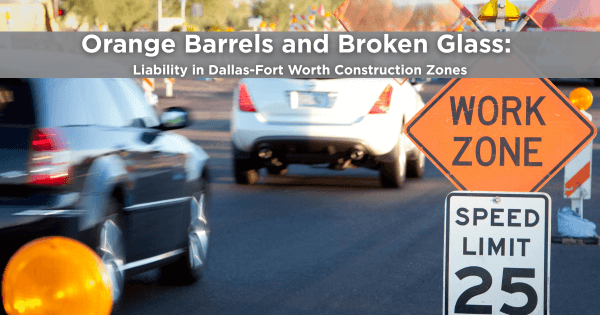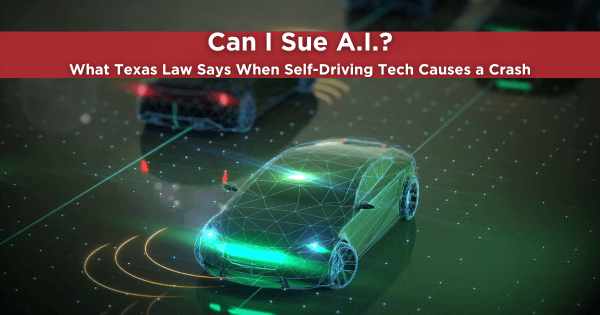Debunking misconceptions in Texas that can hurt injured riders in court or settlement talks
Motorcyclists already fight an uphill battle against bias. Add a handful of persistent myths, and a valid injury claim can be undervalued—or lost entirely. Below, we break down the most common misconceptions we see in Texas cases and set the record straight with practical, courtroom-ready guidance.
Myth #1: “If I wasn’t wearing a helmet, I can’t recover anything.”
Reality: Texas uses modified comparative negligence, not wearing a helmet is not an automatic bar to a lawsuit or claim.
Under the proportionate responsibility statute, your recovery is reduced by your percentage of fault and barred only if you are more than 50% at fault. See Tex. Civ. Prac. & Rem. Code (CPRC) §33.001–.003. Failure to wear a helmet is not negligence per se and does not automatically defeat your claim. It may become a damages issue only if the defense proves a causal link between the lack of a helmet and the injuries you’re claiming.
Texas helmet law, quickly: Riders under 21 must wear a helmet; riders 21+ may ride without one if they’ve completed a safety course or carry the required insurance. See Tex. Transp. Code §661.003. Police generally can’t stop an adult rider solely to check helmet qualifications. In civil cases, defense lawyers sometimes try to analogize the Texas Supreme Court’s seat-belt ruling (allowing non-use evidence when causally relevant) to helmets. The take-home: it’s a fact-specific mitigation argument, not a total bar.
What helps: medical causation testimony tying head/face injuries (or the lack of them) to actual crash dynamics; biomechanical opinions; and focusing the jury on the primary negligence (left-turn, unsafe lane change, failure to yield) rather than equipment debates.
Myth #2: “Lane splitting is legal here, so the car is always at fault.”
Reality: Lane splitting is not legal in Texas.
Texas requires vehicles—including motorcycles—to remain within a single lane and only move to another lane when it is safe. See Tex. Transp. Code §545.060. A rider who threads between lanes risks a comparative fault finding. That said, the driver’s independent negligence (unsafe left turn, failure to keep a proper lookout, texting, etc.) still stands and may carry the larger share of fault.
What helps: scene photos/video, speed analysis, witness statements on the driver’s actions, and clear testimony about rider conspicuity and escape options.
Myth #3: “The at-fault driver’s insurance will pay my medical bills as I go.”
Reality: In Texas, liability carriers typically pay once—in a lump-sum settlement or judgment.
During treatment, you’ll usually rely on PIP/MedPay, health insurance, or letters of protection obtained with the help of an attorney. Personal Injury Protection (PIP) must be included in Texas auto policies unless rejected in writing; minimum limits are commonly $2,500 (many purchase more). See Tex. Ins. Code §1952.151 et seq. UM/UIM coverage must also be offered and can fill the gap when the at-fault driver is uninsured or underinsured (Tex. Ins. Code §1952.101).
What helps: verify and stack available coverages early (PIP, MedPay, UM/UIM, third-party liability), confirm written rejections, and align medical billing to reduce balance-billing surprises.
Myth #4: “The police report decides liability.”
Reality: It’s helpful, but not dispositive.
Crash reports often contain hearsay, opinions, and incomplete facts. They’re useful leads, but liability turns on admissible evidence and a jury’s allocation of fault. We corroborate (or challenge) the report with photos, EDR/ECM data, dashcam, smart-home or business cameras, 911 audio, phone metadata, and expert analysis.
What helps: rapid preservation letters, on-scene measurements, and prompt open-records requests. Don’t let the only story in the file be the first one written.
Myth #5: “I have to give the other insurance company a recorded statement.”
Reality: You don’t owe a recorded statement to the other side.
Cooperate with your insurer as your policy requires, but politely decline recorded interviews from the adverse carrier. Adjusters are trained to lock in admissions and minimize claims. We provide evidence in writing at the right time and with the right context.
What helps: route all communications through your lawyer; provide concise, verified, non-recorded factual updates when tactically advantageous.
Myth #6: “If it was a hit-and-run, there’s nothing I can do.”
Reality: UM can still cover you—often the difference-maker.
Texas Uninsured Motorist coverage is designed for exactly this situation. Promptly report the crash to law enforcement and your insurer, document the attempted identification, and preserve all video (helmet cam, dashcam, nearby businesses). A quick canvass often finds a camera you didn’t know was there.
Myth #7: “Pain and suffering isn’t a thing in Texas.”
Reality: It is—but you have to prove it.
Texas permits recovery of non-economic damages (pain, mental anguish, physical impairment, disfigurement, loss of enjoyment) along with economic losses (medical bills, wage loss, diminished earning capacity). There’s no general PI cap outside medical malpractice; exemplary (punitive) damages are available for fraud, malice, or gross negligence, subject to CPRC §41.008 caps.
What helps: consistent treatment records; specific day-in-the-life examples; employer corroboration; before-and-after witnesses; photos of visible injuries; and functional testing.
Myth #8: “Because I was speeding a little, I don’t have a case.”
Reality: Comparative negligence assigns percentages, not absolutes.
Even if a rider shares some blame (e.g., modest speeding), you can still recover so long as your responsibility does not exceed 50% (CPRC §33.001). Defense experts often overstate speed—accident reconstruction, skid analysis, and video frame-rate work can bring the number back to reality.
Myth #9: “I can file whenever; the insurance negotiations will keep the clock open.”
Reality: The statute of limitations is generally two years from the crash (or death).
See CPRC §16.003. Claims involving governmental entities trigger notice deadlines as short as 6 months (and some cities/charters even shorter) under the Texas Tort Claims Act, §101.101. Negotiations do not toll the statute. File or toll, or risk losing the claim.
Myth #10: “Juries always blame the biker.”
Reality: Juror bias is real, but evidence beats stereotypes.
Clear liability narratives, humanized riders (family, work, safety training), expert-driven crash analysis, and smart voir dire go a long way. We show visibility challenges drivers should anticipate (left-turn across path, blind-spot merges), transform “biker bias” into a driver-duty case, and anchor damages to objective proof.
What Damages Can a Texas Motorcyclist Recover?
- Medical expenses (past/future) and rehabilitation
- Lost wages and diminished earning capacity
- Property damage (bike, gear)
- Pain, mental anguish, physical impairment, disfigurement, loss of enjoyment
- Exemplary damages in qualifying cases (CPRC Ch. 41)
Practical Steps That Strengthen Your Claim
- Medical care now, not later. Gaps in treatment are Exhibit A for adjusters.
- Preserve evidence immediately. Send spoliation letters, pull 911/dashcam/business video, and capture the scene.
- Lock down your coverages. Confirm PIP/MedPay and UM/UIM; get written rejections if the carrier claims you waived them.
- Control communications. No recorded statements to the at-fault carrier. Route everything through counsel.
- Watch your social media. Even harmless posts get twisted; tighten privacy and post nothing about the crash or activities.
FAQs
Is lane filtering ever allowed at a red light?
Not under current Texas law. Treat it like any other lane rule (Transp. Code §545.060).
Will not wearing a helmet kill my case?
No. It may become a limited damages issue if causally tied to head injuries, but it’s not an automatic bar (CPRC Ch. 33; Transp. Code §661.003).
Can I use PIP (Personal Injury Protection) if I was on a motorcycle?
PIP is tied to the auto policy terms. Many Texas policies cover the named insured and household family members as pedestrians or occupants of a motor vehicle—check your declarations and endorsements. If it was your auto policy, PIP often still applies; if it was the other driver’s policy, it won’t.
What if a city truck hit me?
You likely face short notice deadlines and damage caps under the Texas Tort Claims Act (CPRC Ch. 101). Act fast.
How long do I have to file?
Generally two years (CPRC §16.003). There are exceptions (minors, government, wrongful death), so get a legal review immediately.
Why Riders Choose Our Firm
We understand both the bias riders face and the physics of motorcycle crashes. We build cases around driver duty, not stereotypes—backed by reconstruction experts, medical specialists, and a trial-ready file from day one. Whether you ride a cruiser on 377 or commute through West 7th in Fort Worth, Texas, your case deserves a fair look and full value.
Take the Next Step Toward Justice and Recovery
If you or someone you love has been injured in a motorcycle accident anywhere in Texas, don’t wait to get the help you deserve. The sooner an experienced attorney is on your side, the stronger your claim will be. At HLAW, we know how to overcome bias against riders, protect crucial evidence, and fight for every dollar you’re owed.
Our team will:
- Evaluate liability from every angle – driver negligence, road hazards, defective parts, or all of the above.
- Uncover every available source of compensation, including PIP, MedPay, and UM/UIM coverage you may not realize you have.
- Build a tailored treatment and evidence strategy that supports both your medical recovery and your financial claim.
- Negotiate assertively or take your case to trial if the insurance company refuses to treat you fairly.
You don’t have to face insurance adjusters, complex laws, or mounting medical bills alone. Contact us today for a free, no-obligation consultation—let us put our experienced team and resources to work for you and your family.

